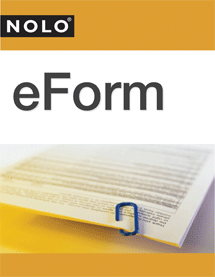Exposure to lead-based paint can lead to serious health problems, such as brain damage or attention disorders in children, which is why home sellers must alert prospective buyers to the risks on their property.
Houses constructed before 1978 are likely to contain some source of lead, be it lead-based paint or lead pipes. This is dangerous to those who live there, particularly children. To protect homebuyers, Congress passed the federal Residential Lead Based Paint Hazard Reduction Act of 1992 (42 U.S. Code § 4852d), commonly referred to as Title X (Ten). It is aimed at evaluating the risk of lead poisoning in housing and taking steps to remove the hazards.
Title X is focused on older properties. If the home you plan to sell was built before 1978 (unless it's a foreclosure property sold "as is"), you must take the steps described below.
When Real Estate Sellers Must Disclose Lead Paint Hazards
Selling a house or condo built before 1978? Here are your responsibilities to disclose lead-based paint and other sources of lead to prospective buyers.
- Disclose lead-based paint and other lead hazards. You must give prospective buyers (before they sign a purchase contract for your house) any known information and available reports you have on lead paint hazards on your property, inside and out. This might include, for instance, lead-based paint (interior or exterior) or lead-contaminated soil (which can result from power-washing lead-based paint before repainting a house). The federal Department of Environmental Protection (EPA) has a form available for this purpose: Disclosure of Information on Lead-Based Paint and /or Lead Based Paint Hazards. The law does not require sellers to test or remove lead-based paint, but to disclose information they know about to prospective buyers.
- Give buyers an EPA pamphlet on lead hazards. Sellers must give buyers an EPA-prepared pamphlet, Protect Your Family From Lead in Your Home. This pamphlet includes information on the health effects of lead, and how to identify, reduce, or eliminate lead-based paint or other hazards. The buyer must acknowledge having received this pamphlet along with information on lead-based paint hazards on the EPA disclosure form mentioned above. The pamphlet is available in many different languages on the EPA website. Sellers must keep a signed acknowledgment of their disclosures for at least three years from the date of the sale.
- Provide buyers ten days to conduct their own lead-based risk assessment or inspection. If the home buyer and seller mutually agree, this ten-day period may be lengthened, shortened, or waived. In most states, only certified professionals may do lead abatement work.
Homebuyers typically include contingencies in their purchase offers specifying what conditions must be met before the real estate deal will be finalized. Contingencies typically allow a buyer to conduct inspections (which can be done by a general inspector or a specific lead-based paint inspector) and to back out of the agreement if the buyer doesn't like the results or can't agree with the seller on how to deal with any needed repairs.
Penalties for a Real Estate Seller's Failure to Disclose Lead Hazards
Home sellers who fail to comply with federal disclosure responsibilities may be sued by the buyer for damages suffered. These can be quite hefty, especially if young children have developed a lead-related health problem (over $10,000, depending on the violation). Other penalties can also be imposed.
Your State Might Also Have Lead-Based Paint Rules and Programs
In addition to complying with federal lead-based paint disclosure rules, be sure you comply with your state's disclosure requirements (see Required Disclosures When Selling U.S. Real Estate).
Many states have lead-based paint activities of interest to home buyers and sellers. To find yours, check the EPA website. The Centers for Disease Control and Prevention (CDC) also has useful information on state programs and legislation and more.
The National Lead Information Center (NLIC) is a fine resource for information on lead hazards, prevention, disclosures, and certified lead inspectors.
Talk to a Lawyer
Need a lawyer? Start here.
How it Works
- Briefly tell us about your case
- Provide your contact information
- Choose attorneys to contact you
- Briefly tell us about your case
- Provide your contact information
- Choose attorneys to contact you


